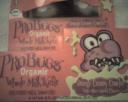A Community Goes Green – Watch Bethesda Green
Green initiatives are popping up all around the world, as people try to do something meaningful to slow global warming, reverse pollution, and make the environment cleaner and safer for generations to come. You’ve seen it with the Eco-Moms, Portland’s Green Groups, and now, the kick-off of Bethesda Green, an ambitious project to make Bethesda, Maryland a model green community.
In what may be the first effort of this type, business, government, community, and non-profit leaders are coming together to develop programs that will reduce Bethesda’s carbon footprint, increase its recycling rate, and reduce landfill waste and pollution. And this is just the first phase of the project! In the second phase, Bethesda Green aims to encourage smart growth and green development and to green its business community.
Championed by a local business leader and a county councilman, Bethesda Green is being defined by its community members. Expectations were that 75 people would show up for the kick-off, but nearly 400 folks arrived – from retirees to students to Moms to business owners to community and civic leaders.
This is such a new concept that no one is sure exactly how things will unfold, but the goal is to make Bethesda a model green community.
Thinking about a similar green initiative in your community? Here are six tips to help you get started:
1. Don’t mandate – encourage.
2. Find like-minded leaders in your community and form a small steering committee to help set things in motion.
3. Be open-minded. Everyone has a stake in this. This means business and government and non-profits and students and private citizens.
4. Get some help from professional organizers, at least for the initial phases. Bethesda contracted with the Livability Project* and the Sustainable Business Network of Washington.
5. Make it fun. Plan interesting events to educate and entertain.
6. Put as much on the web as you can. Identify best web practices to facilitate cooperation and communication.
Resources:
Bethesda Green Website (Soon to be relaunched)
Bethesda Green Blog (Soon to be relaunched)
Local media coverage – Washington Business Journal, Bethesda Gazette, more Gazette coverage
Launch Kick-off Remarks by Seth Goldman of Honest Tea, the visionary behind Bethesda Green
Have you been involved in similar initiatives? What do you think about Bethesda Green? Leave a comment and share! Continue reading »
Filed under Green Ideas & Stuff, Tips | Wordpress Comments (7) |A Question for You – Yes, You!
The news is on my mind today – yesterday’s reports of drugs in the drinking water, scientific studies informing us that we need to reduce our carbon emissions by 90% to avert global warming disaster, and the recent discovery of downer cow meat in the school system. Yet I chose not to blog about these issues, figuring that readers would get their news elsewhere.
Is that what you expect from OrganicMania, or do you think I should start blogging about relevant news stories? Please leave a comment and let me know your thoughts. I really value reader comments – we’re at more than 150 reader comments now – and I’ve learned so much from each of you. I want to make this blog work for everyone – let me know your thoughts, please!
— Lynn
Filed under Blog | Wordpress Comments (6) |10 Tips for Greening an Eco-Friendly St. Patrick’s Day
The “green” holiday is becoming anything but green. Back in the “olden days” when I was a kid, celebrating St. Patrick’s Day was simple. You put on some green clothing, perhaps a “Kiss Me I’m Irish” button, and made sure to down some beer that night. If you truly had the Luck of the Irish, you got to watch or march in a fabulous St. Patrick’s Day parade, like the one in New York City where I marched for years.
But like everything else in our consumerist society, we’re being prompted to buy more “stuff” to celebrate properly. I’ve admitted to loving the tacky, tacky side of Christmas, replete with blow-up inflatables and lighting, but decorating for the holidays is a longstanding tradition. Do we really need more inflatables barely three months later? This year, St. Patrick’s Day inflatables have popped up on suburban lawns, biding their time till they end up in our landfills. (Check it out here). And more and more, the retailers are offering special Cheap Plastic Crap for St. Patrick’s Day. Cheap Plastic Crap is bad enough in kid’s goody bags. Do we really want to encourage it on St. Patrick’s Day too?
Here are 10 tips for celebrating a truly green, eco-friendly St. Patrick’s Day. Have fun! Luck o’ the Irish to you!
1. Wear Green
2. March or Watch a St. Patrick’s Day Parade
3. Enjoy Some Irish Spirits
4. Sing Irish Songs
5. Visit an Irish Pub or Restaurant
6. Bake and Decorate Some Green Cookies or Cupcakes
7. Try Some Corned Beef and Cabbage
8. Say No to Cheap Plastic Crap for St. Patty’s Day
9. Say No to St. Patty’s Lawn Decorations
10. Smile and Say Happy St. Patrick’s Day!
Have fun!
— Lynn
Copyright 2008 OrganicMania
Filed under Cheap Plastic Crap, Green Ideas & Stuff, Holidays, Tips | Wordpress Comments (5) |Remembering the Edible Schoolyard
Last week OrganicMania published a series of posts about “How to Get Organics and Healthier Foods into the Schools.” A comment from MamaBird led to today’s guest post, where she writes about her time teaching at a school with one of the nation’s most progressive school lunch programs. What else would one expect from Berkeley, California?
In my students’ minds, the crisp lettuce in the field we skipped through on our journey was just as fascinating as the computers that waited amidst the stacks of books at our local library. It was 1998, and most of the young men and women loping
past the garden had no access to computers at all (many had just arrived in the country). But it was the vegetables that held their attention. On a field trip with an English Language Learner class, I couldn’t help but marvel at the audible excitement and interest over the garden and its teen gardeners. Teacher Patti Rathwell got her students into King’s school kitchen routinely, brought food into the class to illustrate
everyday concepts, and the students’ families brought in delicacies representing cuisines from all over the world to mark special celebrations. Speaking over a dozen languages, the premium form of communication among our students was laughter,
gesture, and the anticipation of flavor.
In 1998, I was a student teacher from UC Berkeley’s MUSE Program apprenticed to two classrooms at Martin Luther King Middle School. The nascent Edible Schoolyard
program, started in 1996 by a collaboration between Chez Panisse and the school
(via the Chez Panisse Foundation), was thriving by the time I landed at King. As I recall, the kids called it the “Peace Garden” and every one of the kids I taught, from
middle school second language learners ranging from 6th to 8th grade, to the 8th
graders in my humanities class, was itching to get their hands dirty. You could almost see the infusion of energy into the crops. These kids were fascinated with what their peers were creating, with their bare hands and brains. They longed to be longed to be outdoors, to work with the soil. But even more, they longed to be in the kitchen, chopping and slicing and mixing and…eating! I’ve never seen such a worthwhile channeling of teen squirm in all my life.
I’ve been thinking about the Edible Schoolyard recently, as I face the reality of
public school lunches here in DC for my daughter and her friends. I’m heartened by the fact that Berkeley, and other schools like Wisconsin’s Appleton Central Alternative School (ACAS), have adopted programs harnessing the power of
delicious and satisfying food to improve not just health but performance. Lunch
Lessons: Changing the Way We Feed Our Children, by Ann Cooper and Lisa Holmes, is a riveting book that chronicles success stories like the Edible Schoolyard and
Appleton’s ACAS, while giving parents concrete suggestions: healthy recipes and contact info for organizations working to effect change in lunch programs.
One school that’s crafted a school environment rich in healthy food and a focus on physical education is Appleton’s ACAS (which banned vending machines and instituted fruit-and-vegetable rich breakfasts and lunches). Appleton has quantifiably documented the impact of providing “nonchemically processed foods that are low in fat, salt, and sugar, as well as fresh fruits and vegetables.” Improvements seen include: more focused on-task behavior, increased cognitive development,
fewer health concerns, fewer discipline problems, better attendance, and better nutrition outside of school.
Wouldn’t it be great if all of our schoolchildren (many of whom rely on school
breakfast and lunch programs as their primary source of nutrition) got a side of nutrition education and sustainable agriculture with their salad bar lunch?
Where to look for more info about transforming your own school? Check
out the following organizations for ideas.
The Center for Ecoliteracy, Lunch Lessons, Better School Food, Food for Change, and Farm to School.
Copyright 2008 MamaBird
Filed under Biodynamic food, Food, Parenting, School lunches | Wordpress Comments (5) |A Great “Green” Weekend Easy Do-Good Project
If you hate built-in obsolescence and have a story about an electronic gadget that broke and couldn’t be fixed, here’s a great way to bring some pressure against companies that perpetuate built-in obsolescence. This is a simple project courtesy of the Electronics Takeback Coalition and Beth at Fake Plastic Fish.
Here’s all you need to do to prepare to send an email detailing your gripe:
1. Note the make and model
2. Year purchased. Is it under warranty?
3. Why it’s dead. (Doesn’t turn on, won’t reboot, can’t upgrade it to run certain software, etc)
4. Steps taken to try to fix it, or cost to fix it. (Tell what happened…did you try to get it fixed but you were told you needed to replace the whole thing? Can you give details? If you know whom you spoke with at the company, that would be great.)
5. Send your story and a picture of the dead gadget (if you have one) to stories@deadgadgets.com — and tell your friends too.
For the full scoop, read the post at Enviroblog here.
Filed under Easy Green Weekend Projects, Green Cleaning Products, Green Ideas & Stuff | Wordpress Comments (2) |Part 2: How to Get Organics and Healthier Food into the Schools
As we all know, shopping for organics and fresh produce for our own households can be complex. Just imagine the challenge of supplying an entire school system with farm fresh foods. According to activists interviewed by OrganicMania, this is one of the key reasons so many public school systems nationwide have resisted parents’ entreaties for more farm fresh and organic foods in the schools.
Check out this ABC News interview with Two Angry Moms who agitate for improvements in the nutritional content of school lunches.
[youtube]http://www.youtube.com/watch?v=-yjQgxZrEQ4[/youtube]
Last year, parents in my community agitated for change in the school menus. Their efforts were detailed in the media here. Yet when I looked at the school menu last week, I saw no evidence of change.
I called Mike Tabor, a farmer who was one of the activists quoted extensively in media coverage of last year’s school menu meetings. He told me that with last week’s Maryland Senate passage of “Farm-to-School” legislation, there is hope that farm fresh foods will soon be available to in public schools throughout Maryland.
It always takes community involvement to enact change. Clearly that’s the case with school lunches. What can you do?
Check out these resources:
Two Angry Moms Resource Page for School Lunch Change
Please send me your stories of success with improving school lunch quality. And check back next week for a guest column from Mamabird, who as a school teacher, saw first-hand what it was like to bring farm fresh produce into the public school system.
Please read Part 1 of this series too!
— Lynn
Copyright 2008 OrganicMania
Filed under Food, Organics, Organics vs. Conventional Foods, Parenting, School lunches, Tips | Wordpress Comments (2) |Organic “Kid Marketing”– Feeling the Onslaught?
So long, Tony the Tiger. Hello, Peter the Probug.
I’ve posted here about how my son recognizes “Kid Marketing” at the grocery store as the hydrogenated oil and sugar-laden processed treats that are major no-nos.
Suddenly, it’s getting a lot harder to say “no” to “Kid Marketing,” because my son also recognizes the USDA Organic Seal. Now he says sweetly, “But Mama, it’s organic! It must be good for you even if it is Kid Marketing.”
And most times, he’s right…the “Organic Kid Marketing” products may still be good for him, but they often cost several times the price of conventional organics, which are already expensive enough!
I imagine that if my kid wouldn’t eat anything healthy at all, I might welcome the overtures of the organic kid marketers. But since he was doing fine with regular old organics, the organic kid marketing hype is an annoyance.
Is anyone else sharing my feelings of resentment at the onslaught of Kid Marketing at the organic grocers? It used to be that organic shops were a refuge from Tony the Tiger, Lucky the Lucky Charms Leprechaun and all the other Kid Marketing icons. I could take my son with me to the organic market, buy a carton of yogurt, some bulk oatmeal, and be done with the shopping with a minimum of fuss and whining.
But I knew I was in for it last week when my son breathlessly told me after school one day, “Katie has the coolest yogurt at lunch. I want some! It’s orange and it’s ORGANIC!”
At the organic market that afternoon, he pointed at a garish orange four-pack of Lifeway Organic Probiotic Whole Milk Kefir Cultured Milk Smoothies. That particular day, I was too tired to say no …it was after all organic and it was just yogurt.
But later I realized that I already have several large containers of biodynamic yogurt in the fridge, courtesy of our CSA. And he liked that yogurt just fine. So why was he so insistent on this yogurt?
“Well, it tastes good,” he responded.
I reminded him that we had plenty of yogurt in the fridge that tastes good.
“It’s ORANGE. My favorite color,” he announced.
“And?” I prodded.
“And it has an alien on it too!”
So I’m buying more yogurt with more packaging because my son wants orange packages with aliens? (Actually, it’s Peter the probiotic bug, according to the packaging).
Look, this story is a bit embarrassing to tell, but I know I’m not alone here…am I? Tell me, what’s been your experience with “Organic Kid Marketing.” Are you starting to feel the onslaught too?
Or is it just the products that has me down? Perhaps. Why don’t the frozen vegetables come with aliens on their bags? Works for me!
— Lynn
Copyright OrganicMania 2008
Filed under Food, Marketing, Organic Product Needs, Organics | Wordpress Comments (6) |How to Get Organics and Healthier Foods into the Schools
On Friday I had my first look at the public school my son will attend. While waiting for the open house to begin, I picked up a lunch menu. What I saw shocked me.
Pizza twice in one week? A choice of a hot dog or pizza? And needless to say, no organic milk. And this in a school district that prides itself on its “healthy choices.” McDonald’s is healthier…at least they sell salads and vegetables that are not fried!
[youtube]http://www.youtube.com/watch?v=XhG4jugEad0[/youtube]
If the schools were able to figure out how to get soda pop and candy and commercial advertising and TV into the schools, how come they’re having such a hard time figuring out how to get even a smattering of organics and healthier options into the schools?
This is part one of a series of posts about getting healthier foods in the schools. Please check back Friday for the second post in this series! In the meantime, please leave a comment and share your experiences with school lunches.
— Lynn
Copyright 2008 OrganicMania
Filed under Food, Parenting, School lunches | Wordpress Comments (4) |“Non-Toxic Tots”
Thought you might be interested in this Washington Post article about how parents are shelling out big bucks for natural and organic baby products in an attempt to buy peace of mind given the safety concerns surrounding so many baby products. The article includes lots of interesting research and a quote from yours truly!
— Lynn
Filed under Baby, Blog, Marketing, Organic Prices, Parenting, Pregnancy | Wordpress Comments (5) |

 My StumbleUpon Page
My StumbleUpon Page



